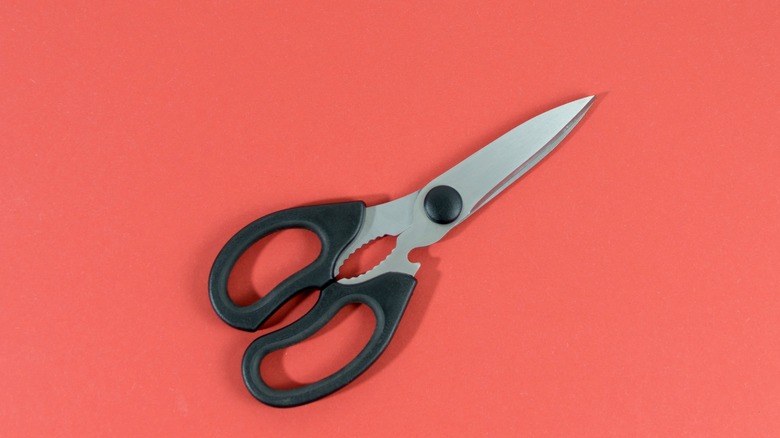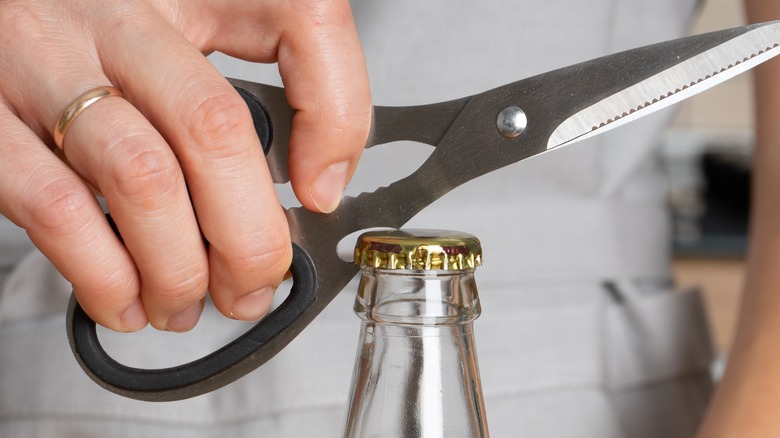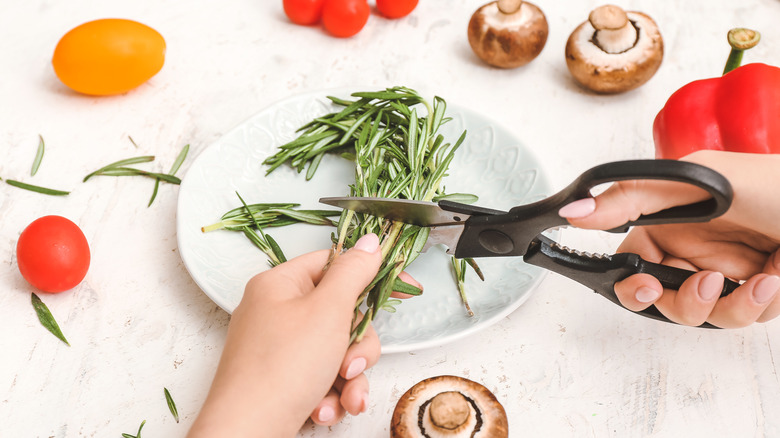The Metal Teeth On Your Kitchen Scissors Aren't For Decoration
Over the course of thousands of years, the human species has designed and redesigned scissors countless times. As such, every aspect of today's go-to kitchen tool is optimized for common cooking tasks. Yes, even those weird metal teeth in the handle have their purpose — or rather, many purposes.
In a more traditional sense, this feature was very likely added to assist with breaking bones of the animal being prepared and stripping its meat (making scissors an excellent choice for cutting a whole chicken), though the asset is not to be confused with the bone notch found in some kitchen scissors. Of course, the serrated grip provided by the teeth also makes it handy for tasks like cracking open lobster and crab shells, as well as walnuts.
Really, so long as you've got kitchen scissors with metal teeth in the handle, you don't need specialized tools to enjoy crustaceans and tree nuts from time to time. Who would've guessed that they could be so useful?
Use kitchen scissors to open bottles and jars, too
If bone-breaking and nut-cracking weren't enough, kitchen scissors can provide the further service of opening tough bottles and jars. To open a stubborn (ideally smaller) jar, position the scissors handle-down, with the metal teeth gripping the edges of the lid. Place your fingers inside the scissor handles, squeeze, and twist.
By the same token, you could use the metal teeth to remove bottle caps from beer, wine, pop, etc. Here too, position the scissors handle-down with the teeth on either side of the bottle cap, squeeze, and twist to remove. Even if you don't have the more reliable screw top wine bottles, you can still use your kitchen scissors to cut and remove the foil from the top before you get out your corkscrew.
That being said, regardless of what you're using your kitchen scissors to open, always keep safety in mind. Always hold scissors with their blades pointed upward, so you never pull up on a lid or bottle cap. Instead, always twist, and be sure to keep the blades as far away from your face as possible.
Tips for buying the perfect kitchen scissors
Though it's understandable to think all kitchen scissors are made equal, the reality is that they come in many different shapes and sizes. Some may even come with additional features, like a bone notch, a specified nutcracker, a more standard-looking bottle opener, and even screwdriver tips. Of course, not everyone needs all these features, so don't feel obligated to buy the fanciest scissors in the store if you only need them for the most basic tasks.
Another consideration is the construction of the scissors. Particularly where raw meat is concerned, it's important that the ones you choose are easy to clean — and bonus points if the blades are detachable for even more in-depth cleaning around the fulcrum. Likewise, if you plan to use the scissors frequently and for tougher tasks, you might want to purchase a forged carbon or stainless steel pair, preferably without rubber handles. All in all, it never hurts to do your research to find the best scissors for your needs.



